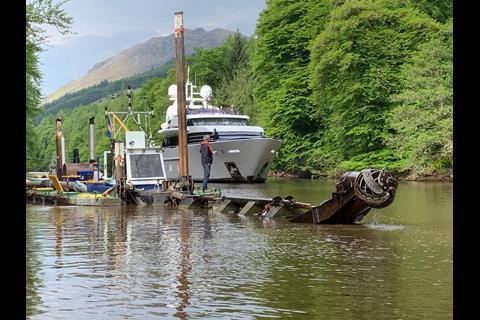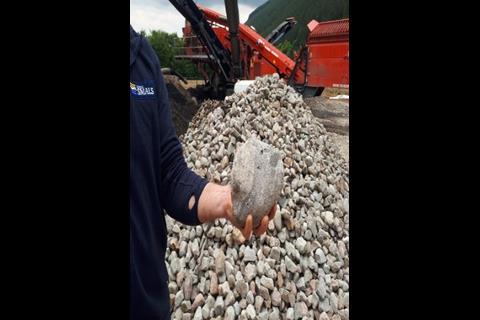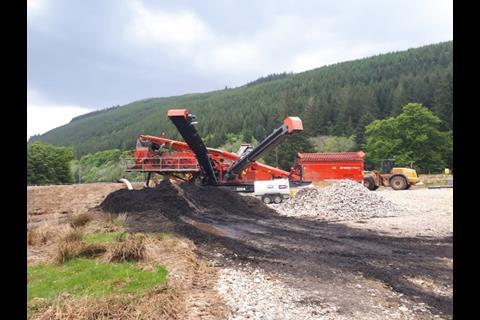Over the last decade, Scottish Canals’ maintenance dredging works in its beautiful touristic inland canals where almost minimised to zero.
In the high ecological environment, nearby the 5mtr high waterfall at Laggan Spout, part of the Caledonian Canal nearby Laggan Lock and Fort William, the canal had to be deepened. These mainly recreational ships had to be prevented from grounding . Scottish Canals asked her main contractor Mackenzie Construction Ltd to hire in hydraulic dredging specialist Royal Smals to remove approximately 12,500m3 of superfluous sediment out of the canal.
After a first investigation on site, and gathering enough sediment samples together with some crucial tests in the Royal Smals laboratory, the design of the project was developed. Several fruitful meetings with the cooperative team (Scottish Canals, Mackenzie Construction Ltd, Suricates; international reuse of sediment network represented by University of Strathclyde, Royal Smals, canal users, local people knowing the environment), Royal Smals designed the 100% circular approach of the dredging campaign. Separation of the dredged up material into at least 4 reusable flows of raw material was the outcome. And the idea wa to reuse all sediments after gathering it.
The 10-inch Cutter Suction Dredger ‘Pioneer’ with additive equipment Multi Cat Pontoon (to get the gasoil tank refilled) and a workboat were, together with the 500 meters of pipeline for sediment transportation, deployed to dredge the sediment from the bed of the Caladonian Canal to the ‘treatment site’.
The total amount of 12,500m3 of sediment was pumped into a special hired innovative separation installation to first sieve the finer particles (broken leaves, organic material) ánd separate the big stones and shingles. Afterwards the approximately 10,000m3 of sand and silt were lead into the higher located lagoon to separate all the sand by gravition. Connected with a wooden cascade waterbox the left over silt was gathered into the lower lagoon.
By using the 10-inch CSD with its gently manoeuvring articulated swing ladder moving slowly over the bottom of the canal, nature and eco-life were hardly disturbed. By transporting all the sediment to the sieve and afterwards to two special designed lagoons, the outcome of the works where impressive.
Coarse fraction will be reused in civil- ,construction or gardening works, the very fine organic particles can be reused as compost or fertilizer for farmers. The sand left in the upper lagoon, can be sold to either concrete industry, as additive for asphalt or for construction purposes. The silt left in the lower lagoon can be reused as fertilizer of the local
For this project the required permits and licences were awarded by Scottish authority SEPA. Apart from that local authorities like the council were involved in the permission for this challenging approach as well.
The innovative project was completed in altogether 4 weeks. Client and contractors were satisfied with the outcome; a completely circular project with 100% well separated, reusable raw materials as good example for future maintenance dredging projects.














